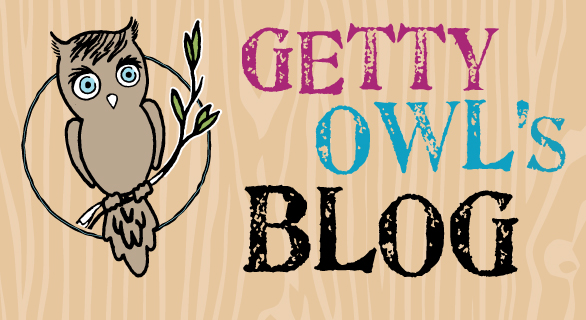


Bath Time!
From Kate:
We have found a very exciting activity for Getty. Since gravity isn’t kind to her little legs, we found the bath to be a haven for kicking and relaxing. She and I have decided that “bath time” will be every night before bed and perhaps every morning after feeding. She loves moving her legs in the warm water. Heck I don’t blame her, I love baths as well.
In the last few days, she has met a whole bunch of new people who are here to help her and make her more comfortable. There was a moment yesterday when two neurologists and two geneticists were looking at her on the doctor’s table and, as her mother, I was nervous. It seemed like too much. Then loud giggles came out from the table and I knew she was having the time of her life. It was like she was saying, “Hi my name is Getty, what is all the fuss about?” Oh my heart grew so warm.
Today she got to spend the day with her dad and mom and her grammy and papa. We all got a chance to help her excercise her legs and arms, as well as giving her all kinds of smoochies and hugs.
It was a great day.
Aug
2010
Comment
Meeting with FSMA President
From Mark:
David, the President of the Northern California Chapter of FSMA, drove from Santa Rosa to visit us at our home. He and his wife, Lisa, had a baby, Matthew, who was diagnosed with SMA1 at age 1 month. Matthew passed in 1998 at age 6 months.
David is so wonderful and gracious. He talked to us for 5 hours and answered every question we asked.
He gave us his basic summary of SMA. He said cells need proteins to work and survive. SMA causes the body to produce less of this special protein than is needed to allow the nerves to communicate with the muscles. The muscles get less signal than is needed, causing them to lose tone. The loss of muscle tone causes a loss of strength and causes SMA babies to be “floppy.”
The timing of SMA manifesting in infants is important because it essentially locks the baby into the level of strength available at the time of manifestation. It is as if the amount of power available to run the body remains fixed while the body continues to grow. Eventually, the available power is not enough to run the machinery.
Children or adults who are older when SMA manifests have already developed enough size and strength to be less affected by SMA. SMA2 kids typically have a later manifestation and longer life expectancy. SMA3 usually manifests in adults and may not affect life expectancy much, if at all.
Scientists are trying to find a way to get the body to produce more of this special protein in SMA patients. Apparently the body needs only 25% of its production capacity of this protein to get by. Hopefully, some day, they will find a cure.
David also gave us some great ideas and helpful hints, like tying balloons to Getty’s arms and legs to reduce the weight load of her limbs. This allows her to play with the balloons under her own power. He also suggested letting her play with cotton balls and scrunchy ribbon.
He recommended lots of water therapy. We noticed yesterday that she is able to move her legs around under her own power when her legs are under water.
He also chronicled his family’s life from Matthew’s birth through his passing and beyond. He was very open and honest about the course of the SMA, the symptoms over time, the quality of life decisions he and his wife had to make, the details of Matthew’s passing, the emotional difficulties involved, and their decision-making process when it came to having more children.
He told us about FSMA. He gave us the contact information of other SMA families who are willing to share with us. He showed us some online resources. He talked about the double grief suffered by grandparents.
In all, we came to appreciate his family and FSMA even more. He is a remarkable man with a remarkable family in a remarkable organization. Thank you dearly.
Aug
2010
Comment
4 Month Check Up
From Mark:
When Baby Getty was born and joined our lives, we were so happy to have such a beautiful healthy daughter. She came home and met Cooper, our whippet, and the kitties. Life was wonderful in so many ways and we had visions and dreams of our little Getty loving, growing, learning, and maturing in years to come.
We were receiving electronic updates letting us know the progress we should expect to see from our little girl. However, Getty’s progress did not match the projected progress. We noticed that she had difficulty moving her head compared to other babies at age 3-4 months. However, her head is in the 94th percentile of head size for her age, and we figured her lack of head movement was of little concern because her little body would eventually grow strong enough to support her big dome.
She was also quite mellow in that she did not move her limbs around very much compared another baby we saw. We thought the other baby may be hyperactive or Getty may be a mellow and relaxed kid. We never expected any serious problem.
About two weeks after making the observations about her relative lack of movement, we went to a routine pediatric appointment on Friday, July 30, 2010. We asked the doctor about these traits just to be on the safe side. We thought the doctor would agree with our assessment that her lack of movement stems from simply being mellow and having a large noggin. We thought the doctor would send us home without a care in the world.
Toward the end of the visit, the doctor picked up Baby Getty and lowered her down onto her legs. Getty’s legs put up no resistance to the pressure of her body weight. The doctor then did a couple of reflex tests by tapping her knees and rubbing her feet. There were no reflex responses.
We watched, but the doctor said nothing. She then turned to us with a concerned look on her face and told us she was making a neurology appointment for the same day. She said she was concerned about something potentially serious, but she would not tell us what it was. She did not want us to look it up on the internet and panic. She said she hoped her thoughts were unfounded but we should go to the neurologist to be sure.
We went home, trying not to panic or jump to conclusions. We then went to the pediatric neurologist, Dr. Friederich. He quietly moved Getty’s arms and legs around. He picked her up and moved her around into different positions. He performed reflex tests with his hammer. He looked at her eyes and her mouth.
He sat down with us and broke the news. He said he thinks Getty has Spinal Muscular Atrophy Type I. He explained what that means and what he saw to lead him to that conclusion. He told us SMA1 is degenerative and normally fatal within the first 2 years of life. He ordered blood work to be sure. We were devastated.
We went home and cried. Our poor baby girl is going to grow weaker and leave us within 2 years, and there is nothing we can do.
The next day, Saturday, we cried some more. We spent our time hugging, holding, and kissing our Baby Owl. Kate’s family paid us a visit, and I called my parents.
We sought the support of family, friends, and the non-profit group called Families with Spinal Muscular Atrophy (FSMA). David and Lisa run the Northern California Chapter of FSMA, and they were so wonderful and gracious in speaking to us at length on short notice on a weekend.
We began researching SMA to learn all we could. We got out of the house to get some fresh air, and we went for a walk in the park with Getty and Cooper. That simple walk in the park was one of the most wonderful things we have ever done in our lives. We appreciated knowing that all that truly matters in the world was spending time with the ones we love.
On Sunday, August 1, we spent more time with each other, family, and friends. We spoke to David and Lisa at FMSA some more. They are such wonderful people who lost a child to SMA at age 6 months several years ago. They offered to drive 2 hours to Sacramento from Santa Rosa to meet us. They offered to introduce us to Sacramento families who are going or have gone through SMA.
We came to understand that all we can really do is love each other as much as possible in the time we have left with our baby girl. The love, support, friendship, and knowledge we were receiving made the bad news more bearable. This was the anniversary of the day Kate and I first met in 2002, and we enjoyed spending quality time with our Baby Getty and family.
On Monday, another good friend, Krista, came into town from Oakland to see us. Kate and Krista took Getty into Kaiser to have blood drawn in an effort to get a definitive diagnosis. The lab results will take about 10 days. I had to go back to work. In between working, I discovered the amazing generosity of complete strangers who offered kind words and support from around the world.
On Tuesday, we took Getty back to see the neurologist and a geneticist. By this time, we had done plenty of internet research on SMA, so we were prepared for the visit.
A second neurologist came in and offered a second opinion. He evaluated Getty and arrived at the same conclusion: SMA1.
We took some comfort in coming to realize that Getty will not likely just slip away from us unexpectedly in the night any day now. She will likely be able to live comfortably for 3 more months or so without any kind of special accommodation. Then, she may become weak to the point of needing some kind of physical support.
We are learning to accept that this is something we cannot change. All we can do is make the best of the time we have together. We resolved to give Baby Getty as normal a life and as much love, care, and attention as possible in what may be the remaining months of her precious life. We also felt better knowing we have the support of family, friends, FSMA, and even strangers from afar willing to lend an ear, give a kind word, and offer a helping hand.
Aug
2010
Comment










